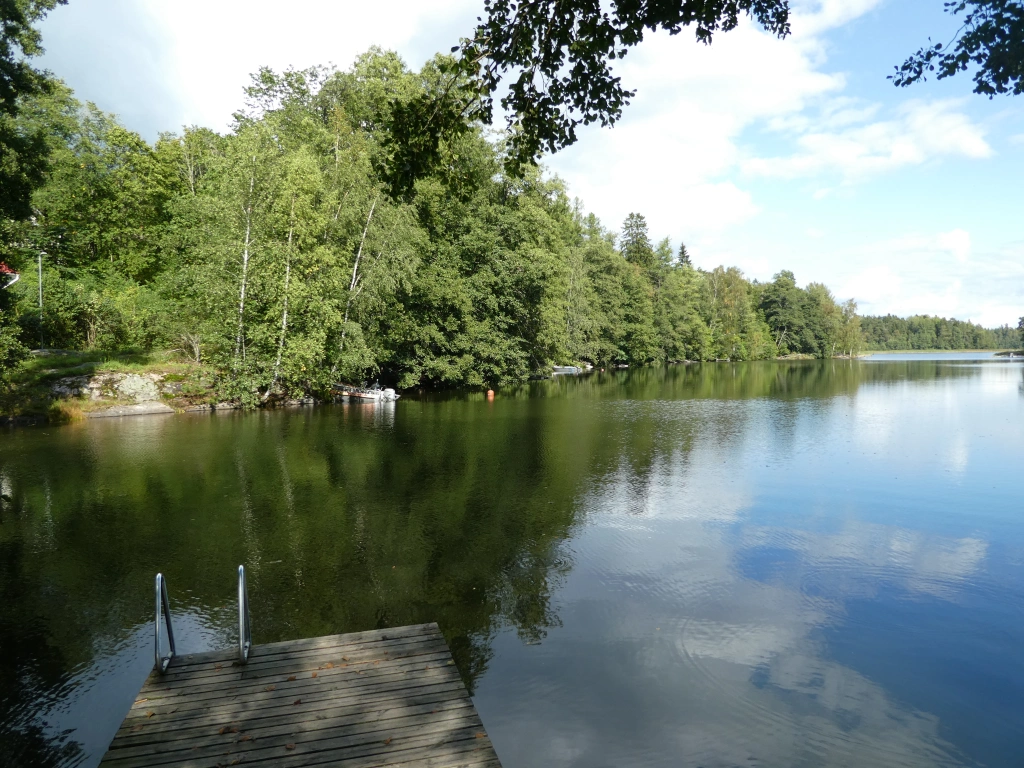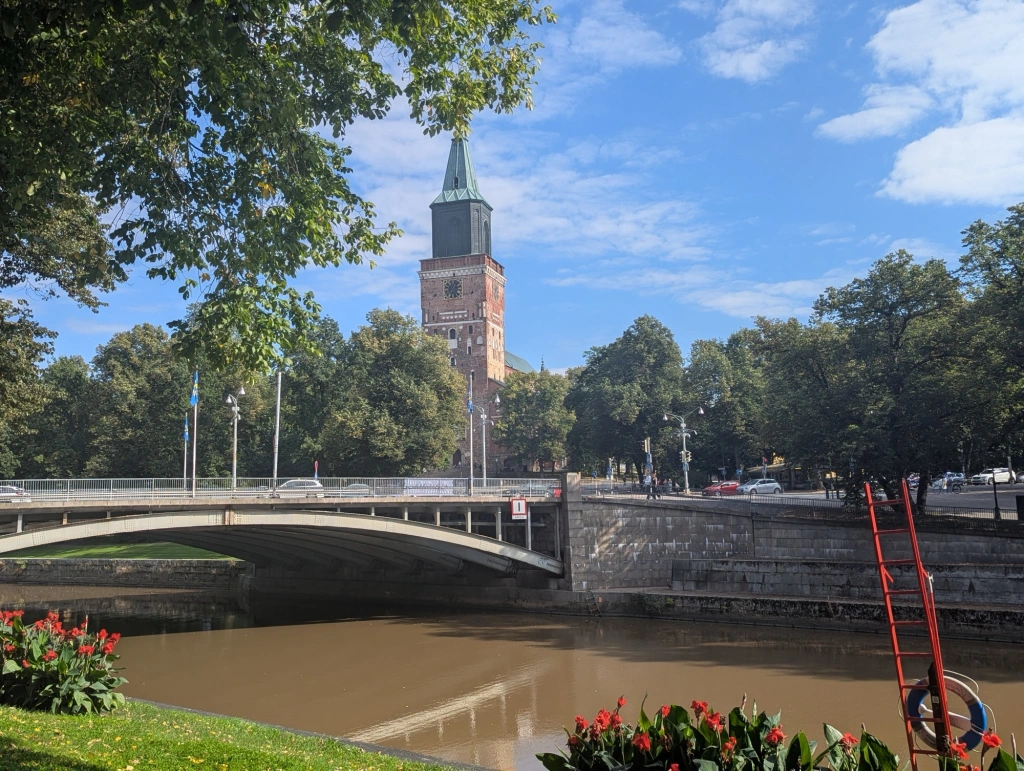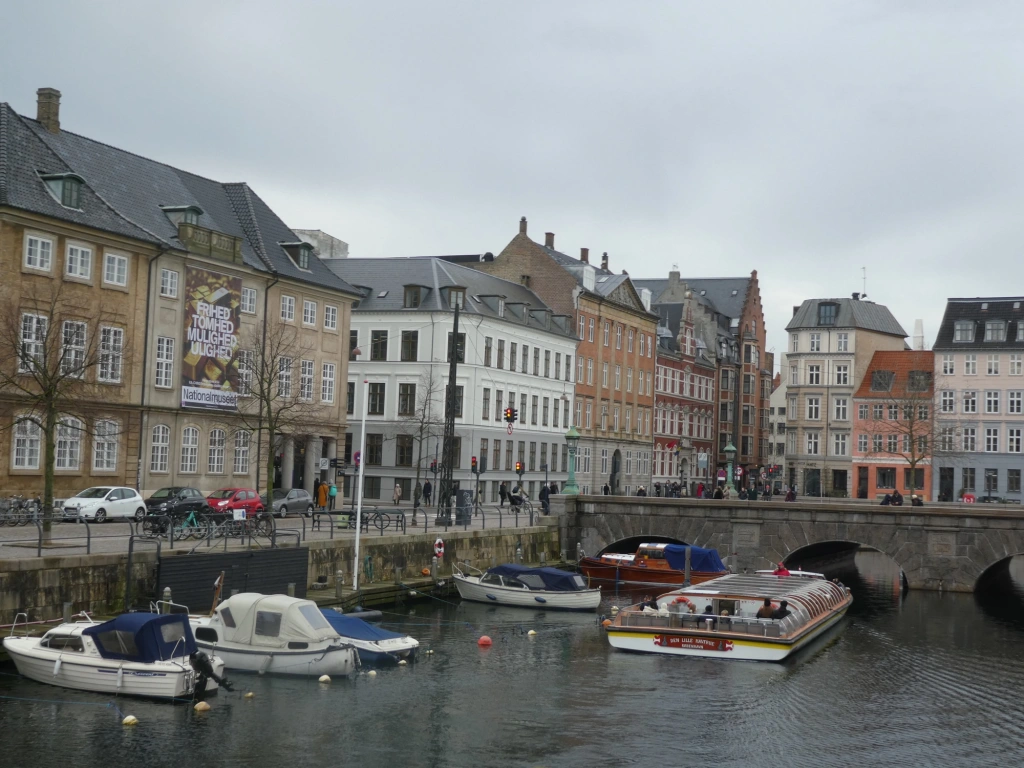Fiskars is a beautiful ironworks village surrounded by lakes and forests and home to many artists and craftspeople. It’s a lovely place to enjoy the Finnish countryside and can be reached from Helsinki in approximately 75 minutes by car or slightly longer by public transport. Visitors without cars can take a train to Karjaa then transfer to a local bus or taxi for the final 15 km.
I have a lovely Finnish friend called Suvi and we always try and meet up during my visits to Helsinki and on this occasion we had arranged to meet in Matinkylä, Espoo and from there we drove to Fiskars, taking one hour. There are two large free car parks in the village one at the Market Place and the other by the Assembly Hall which was where we parked.
Fiskars is a quaint ironworks village that has become a hub for artisans and designers. More than 100 creative professionals now live and work from studios in the village and have formed a co-operative known as Onoma. In recent years the village has also become home to the Fiskars Brewery and Distillery.
The Fiskars group has its origins in this Finnish village where it was founded in 1649 and it is now the oldest business still operating in Finland and one of the oldest companies in Europe. Fiskars is one of the leading brands of gardening, tableware and homeware as it also owns the other renowned Finnish brands of Iittala and Arabia.
Readers from the U.K. may be surprised to learn that since 2015 the Fiskars group has owned the prestigious British brands of Wedgwood and Royal Doulton alongside the exquisite Irish Waterford Crystal. It is highly likely that you may have a Fiskars product in your home without even realising it as their iconic orange handled scissors have reached sales of more than 1 billion worldwide and are to be found in the kitchen drawers of many of our homes.
We followed a path along the riverside towards the village centre. Nestled amid forests and lakes it’s a beautiful area. The waterway that once linked the ironworks to the sea is now popular with canoeists, kayakers and stand-up paddle boarders.
Strolling around the village, the oldest building is the former ironworks office from 1765. The remainder of the village was constructed between 1816-1912 and 21 of these buildings are still in use today as either workshops, exhibition halls, museums, shops or restaurants. We glanced in several of the small shops finding many handmade items including jewellery, clothes, candles, woodwork and paintings. With many of these stores also being artisans workshops we could sometimes see them working in the back of the buildings.
There’s also a large outlet store offering a wide range of Fiskars products from garden rakes to Moomin mugs and Royal Doulton fine china.
Next we visited the Fiskars Museum (standard admission €6, open Wed-Sun 11.00-16.00). The museum documents the everyday lives of the inhabitants of Fiskars Ironworks from the 17th century. It is quite small but its galleries enabled us to discover what it would have been like to have lived and worked in this rural part of southern Finland in those days. A temporary exhibition “The end equals the beginning” was very interesting as it took us on a journey from industry to arts relating the story of how Fiskars Village transformed from an industrial village to the home of creativity and design.
There are room layouts displaying early Fiskars products, numerous artefacts and a selection of dressing up clothes for both adults and children. Additionally during the summertime industrial artefacts related to ploughing can be viewed across the lane in the museum garden. Unfortunately this had closed the previous weekend so we were unable to view it ourselves.
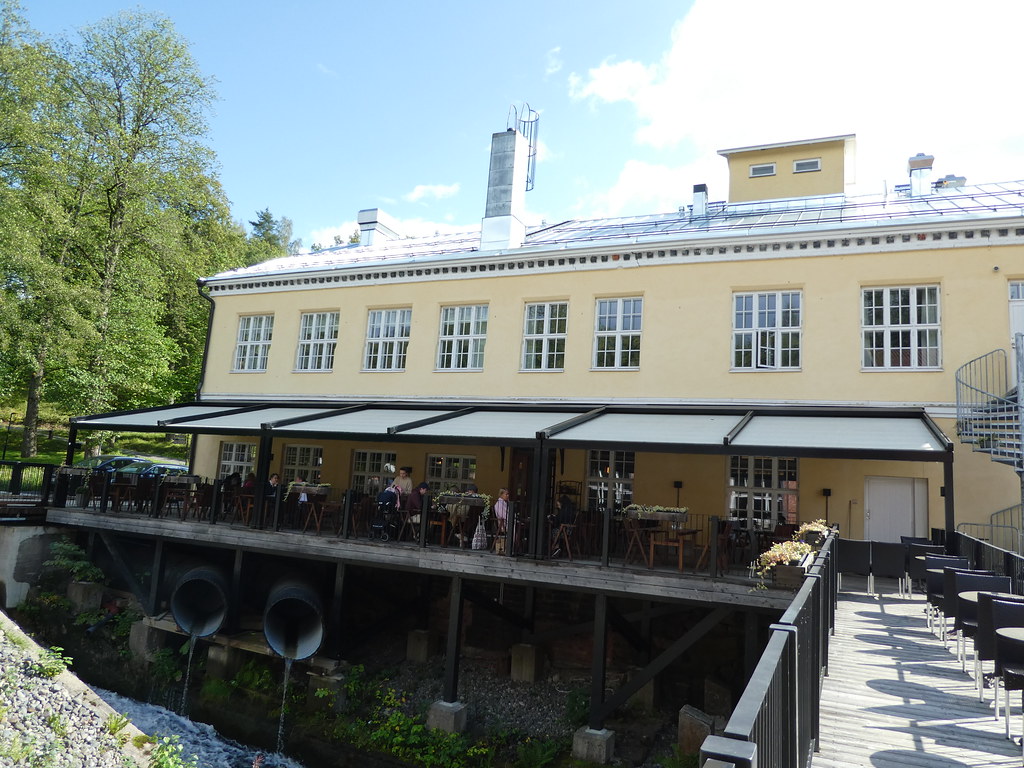
We were then feeling quite hungry so called into the Kuparipaja Restaurant for some lunch. Housed in an old copper smithy the interior is contemporary styled and we found a pleasant window table to enjoy our meal.
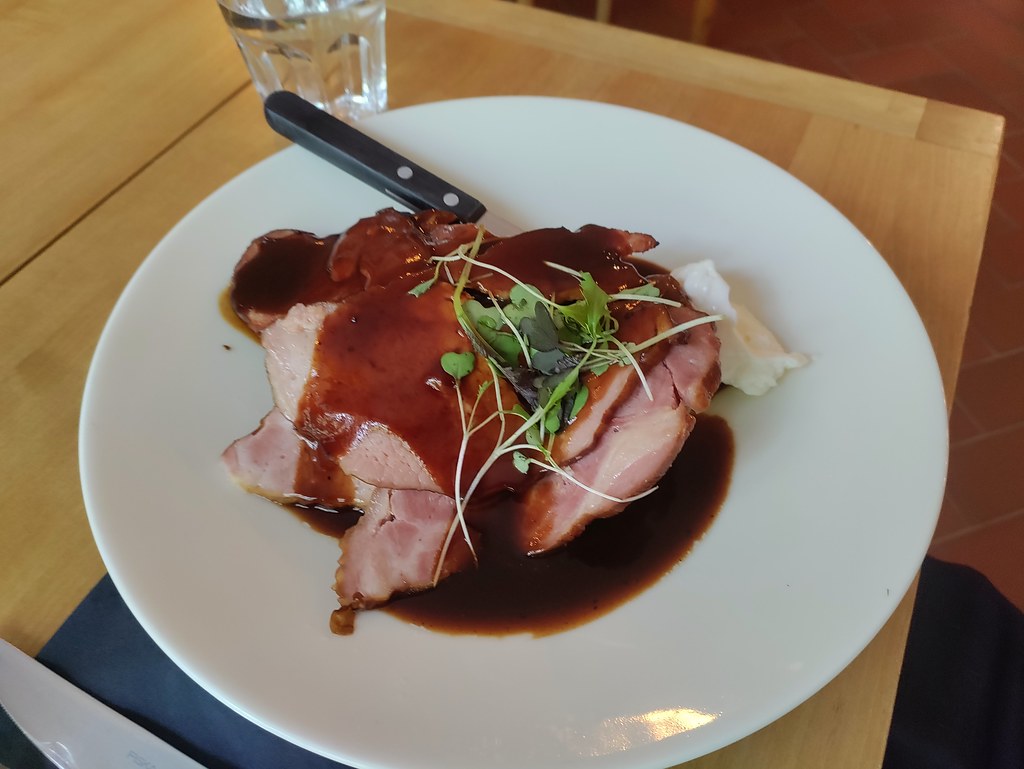
I’m a huge fan of the Finnish authentic salmon soup and as this was on the menu my friend and I both selected this option whilst my son opted for the daily special of barbecued pork. The dishes were very flavoursome accompanied with a basket of traditional dark rye bread and butter.
Feeling rested after our lunch break we then explored the Fiskars Summer Exhibition entitled “Arts and Crafts and Rabbit Holes” located next door in the Copper Smithy’s exhibition halls. (Standard admission €10). The intriguing name ‘Rabbit Holes’ is because it is designed to resemble a series of small rooms arranged in a maze like fashion. The exhibition included a wide range of themes concerning homes and household items, all with a surreal twist.
For example, there was a long wooden trestle table laid out with metal plates with spoons on top. At varying intervals different spoons would start clattering on the plates without anyone touching them.
Other exhibits included a diagonal door referring to a chaotic life whilst in several darkened rooms there were headphones to listen to sounds of voices and music, designed to awaken the senses.
In one of the small rabbit holes we found a partly completed knitted worm of which visitors were invited to add a few stitches and in another there was a mirror which featured a woman with moving eyes. We found the exhibition enjoyable, easy to follow and much bigger than we had anticipated.
We then continued our tour of the village discovering a weekend food festival taking place in the market square. Wandering through the stalls we found an abundance of local produce on sale as well as several food trucks offering tasty food and refreshments.
We then wandered back through the village to the Fiskars Upper Works, home to the old cow shed, machinery workshop and plough factory. The old Fiskars knife factory where knives and scissors were manufactured until 2001 is now the home of the Fiskars Brewery, Ägräs Distillery and Noita Winery. On site is a visitor centre offering tasting experiences, a shop, bar and restaurant but these were all closed at the time of our visit.
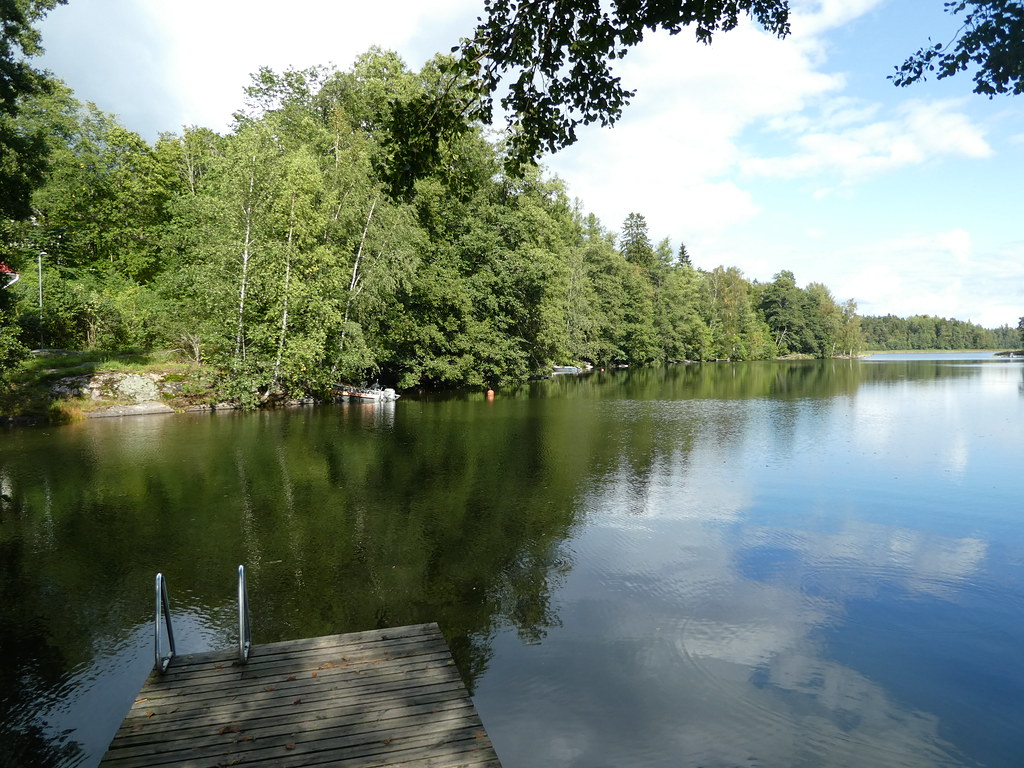
We’d enjoyed a lovely day out in Fiskars enjoying the Finnish nature, learning about its industrial heritage and tasting local cuisine.

